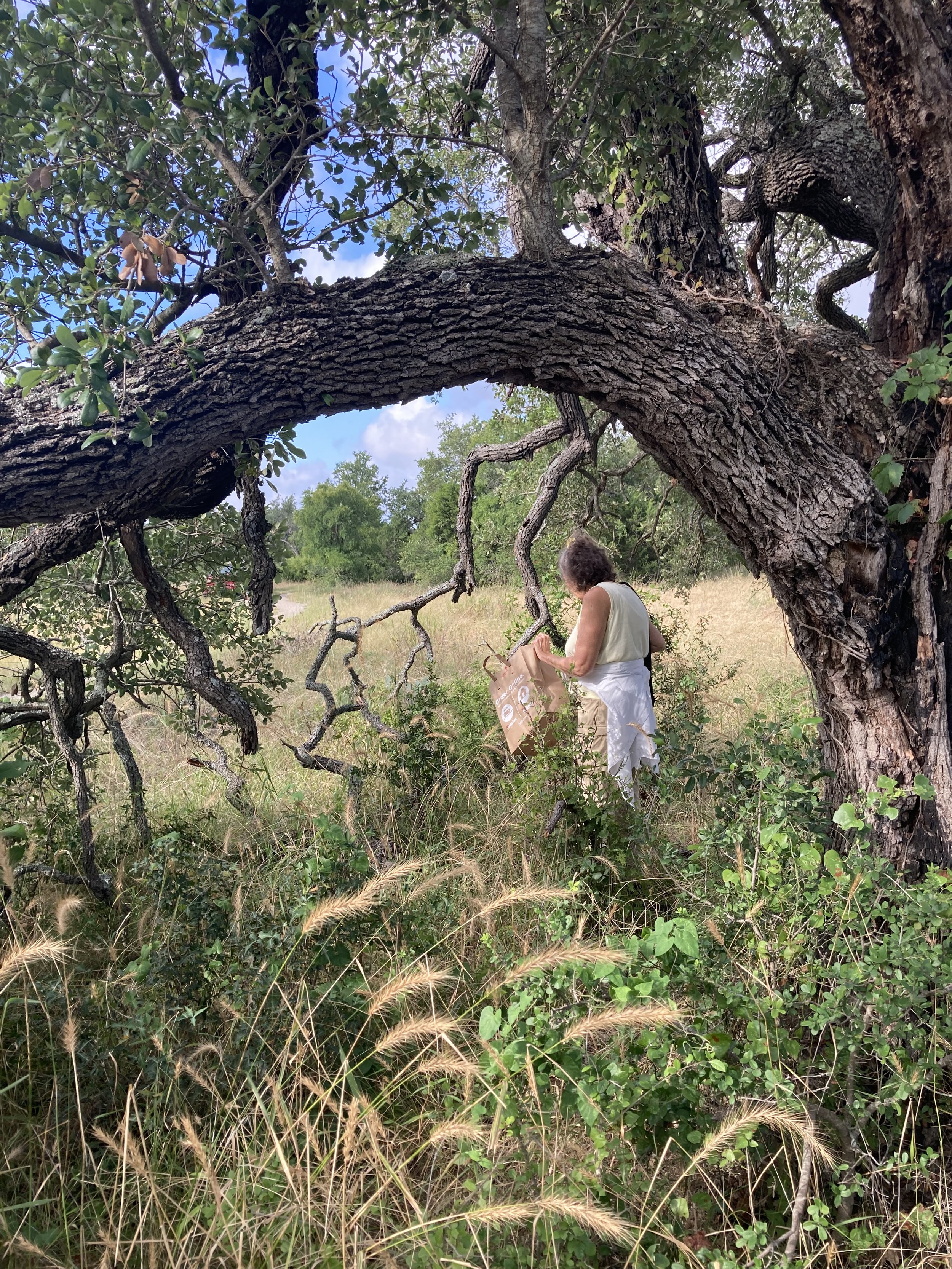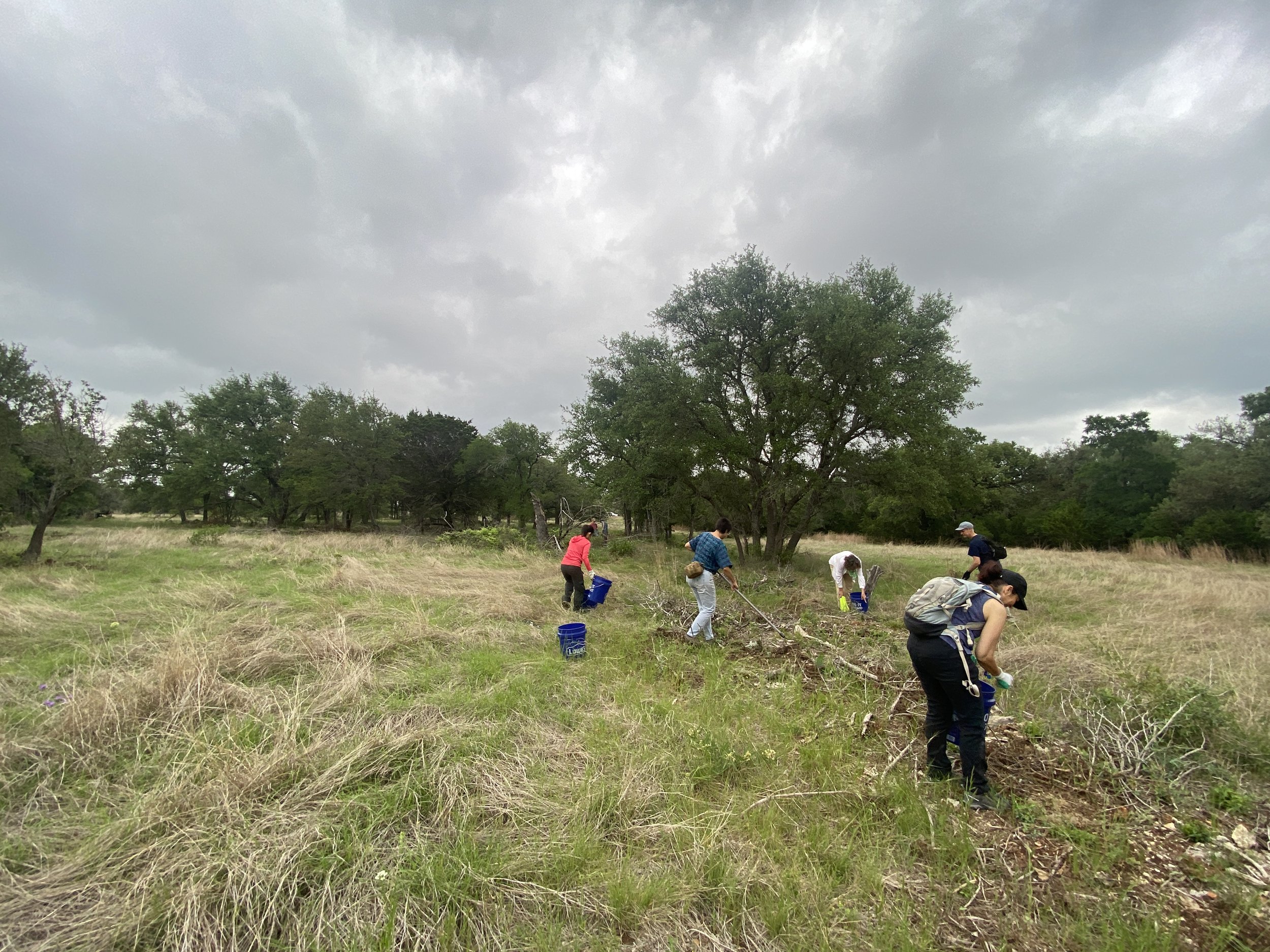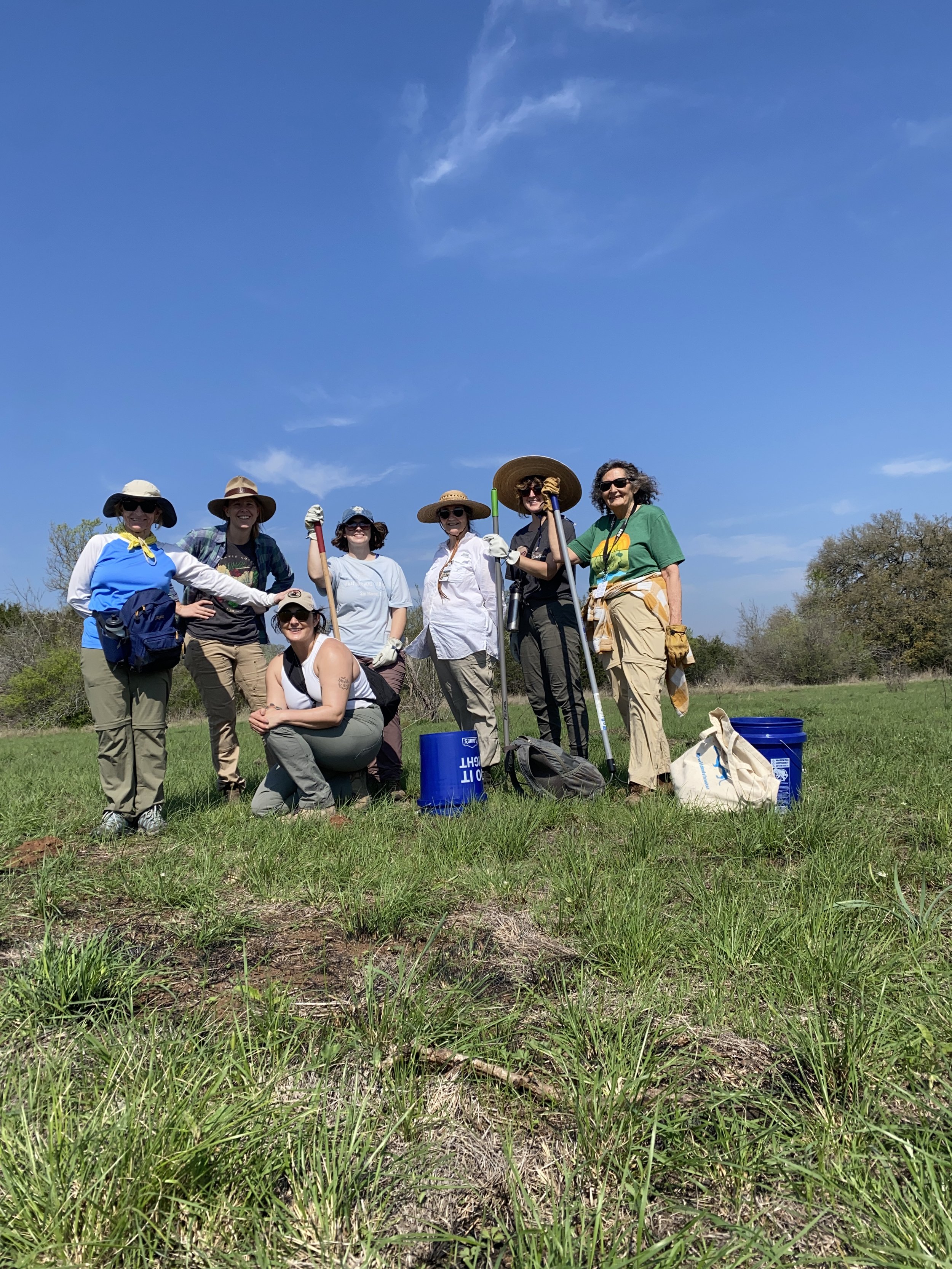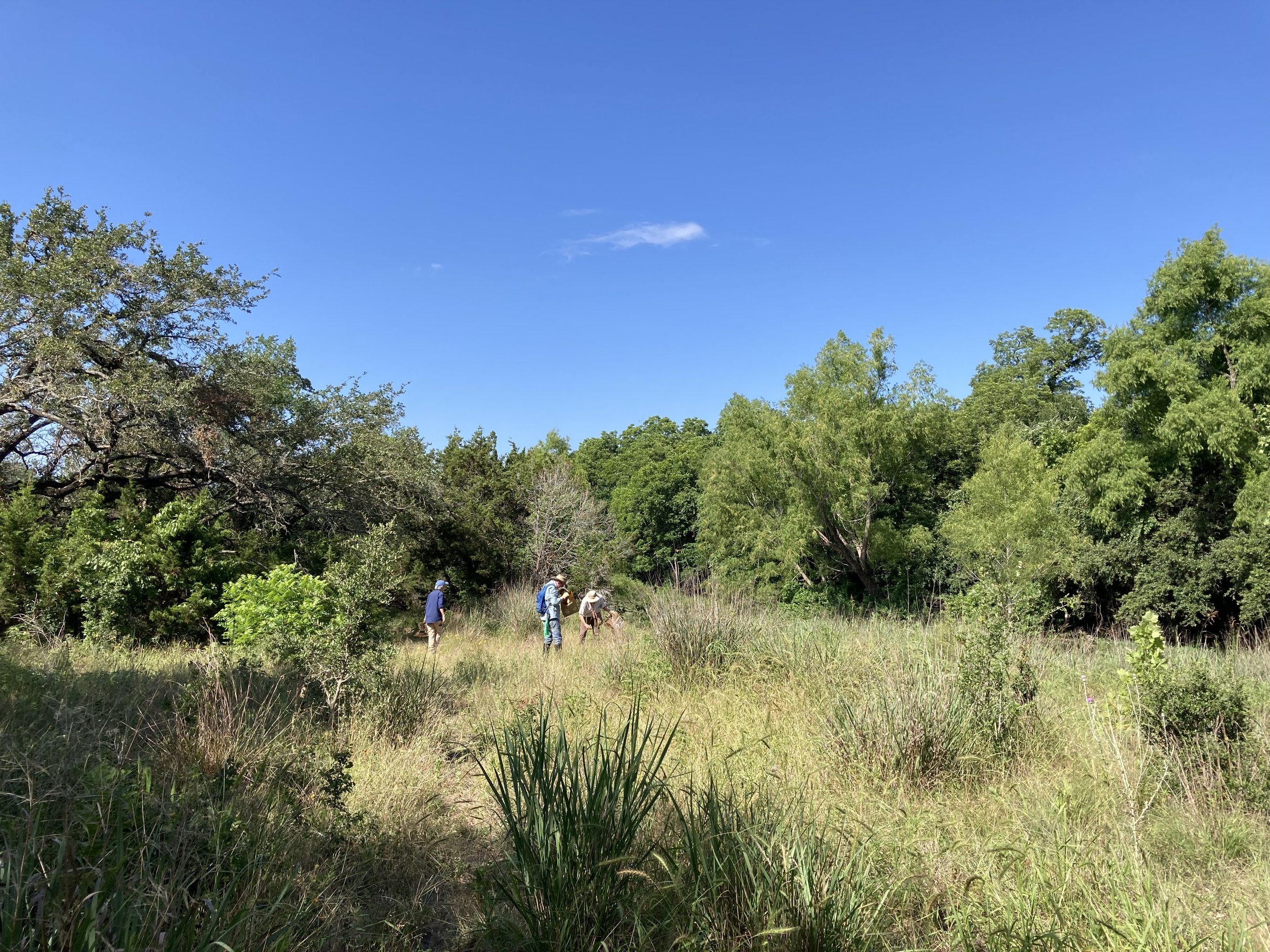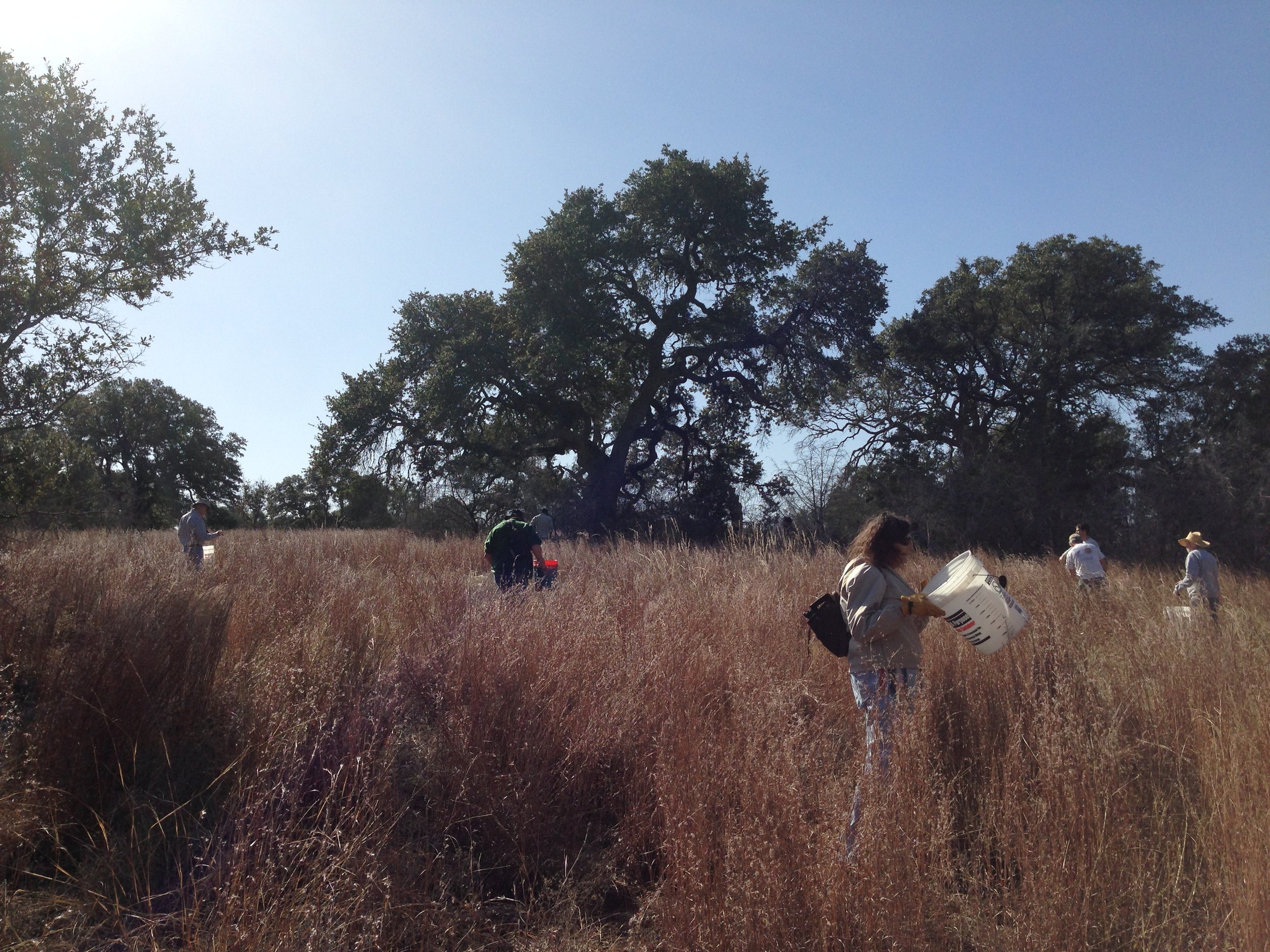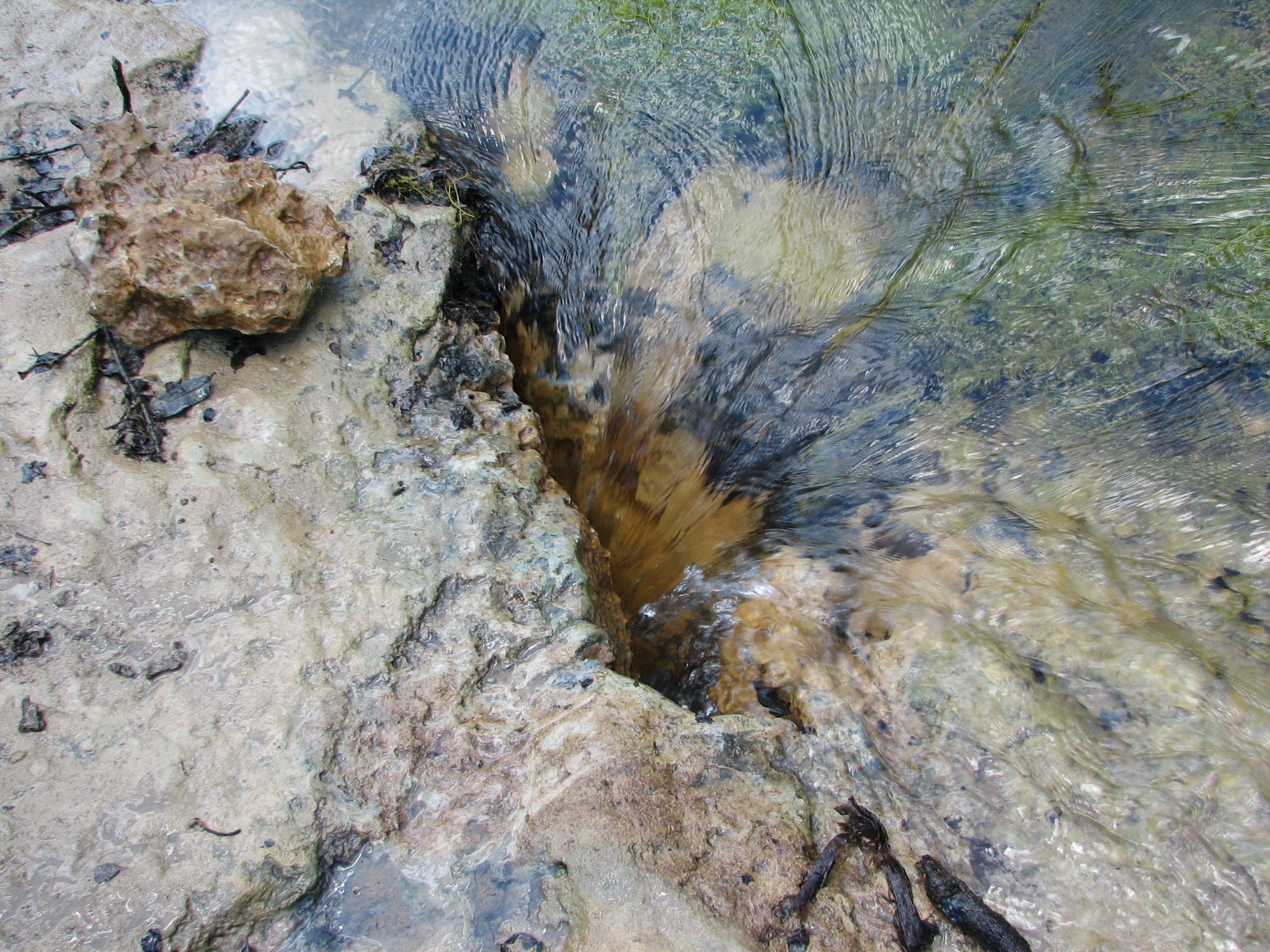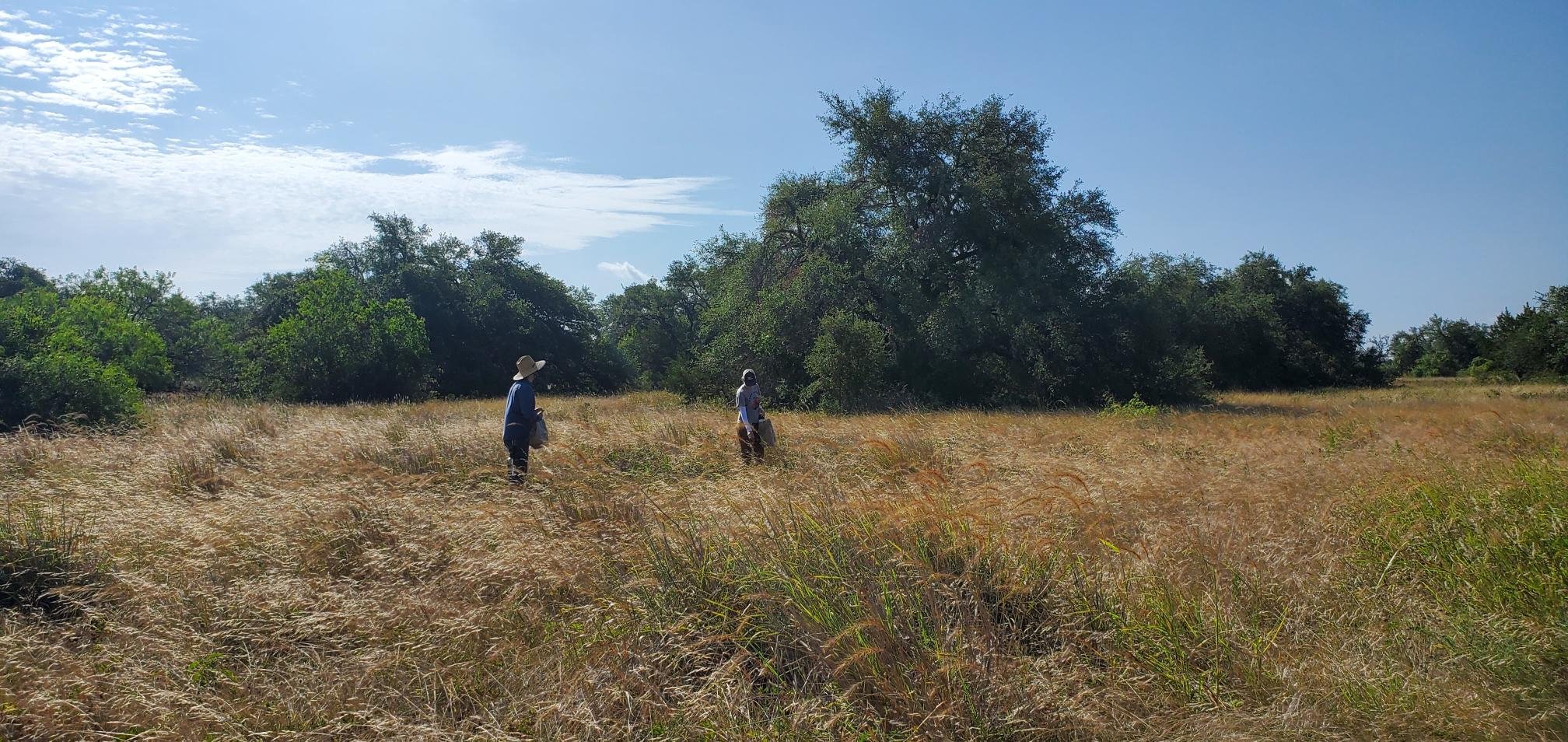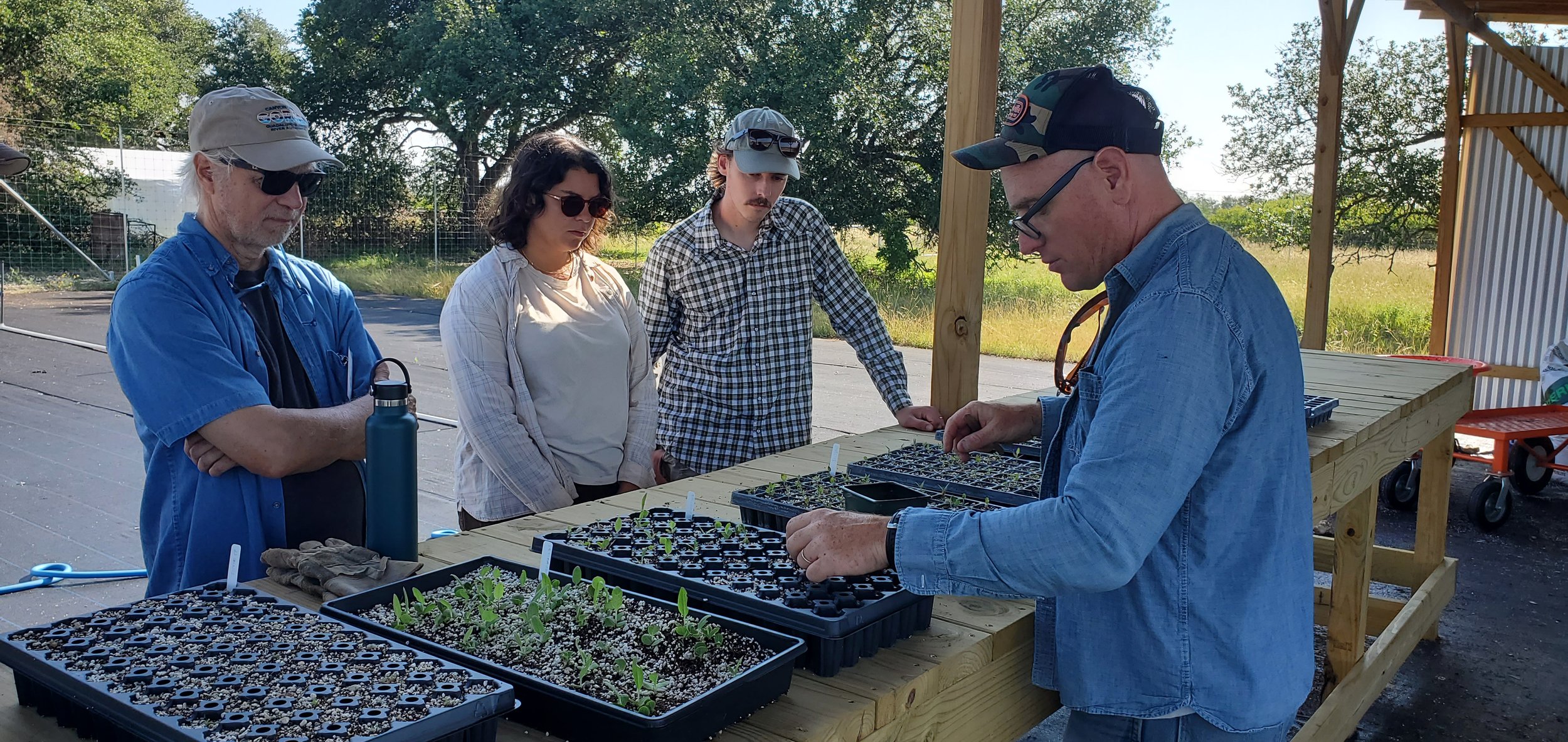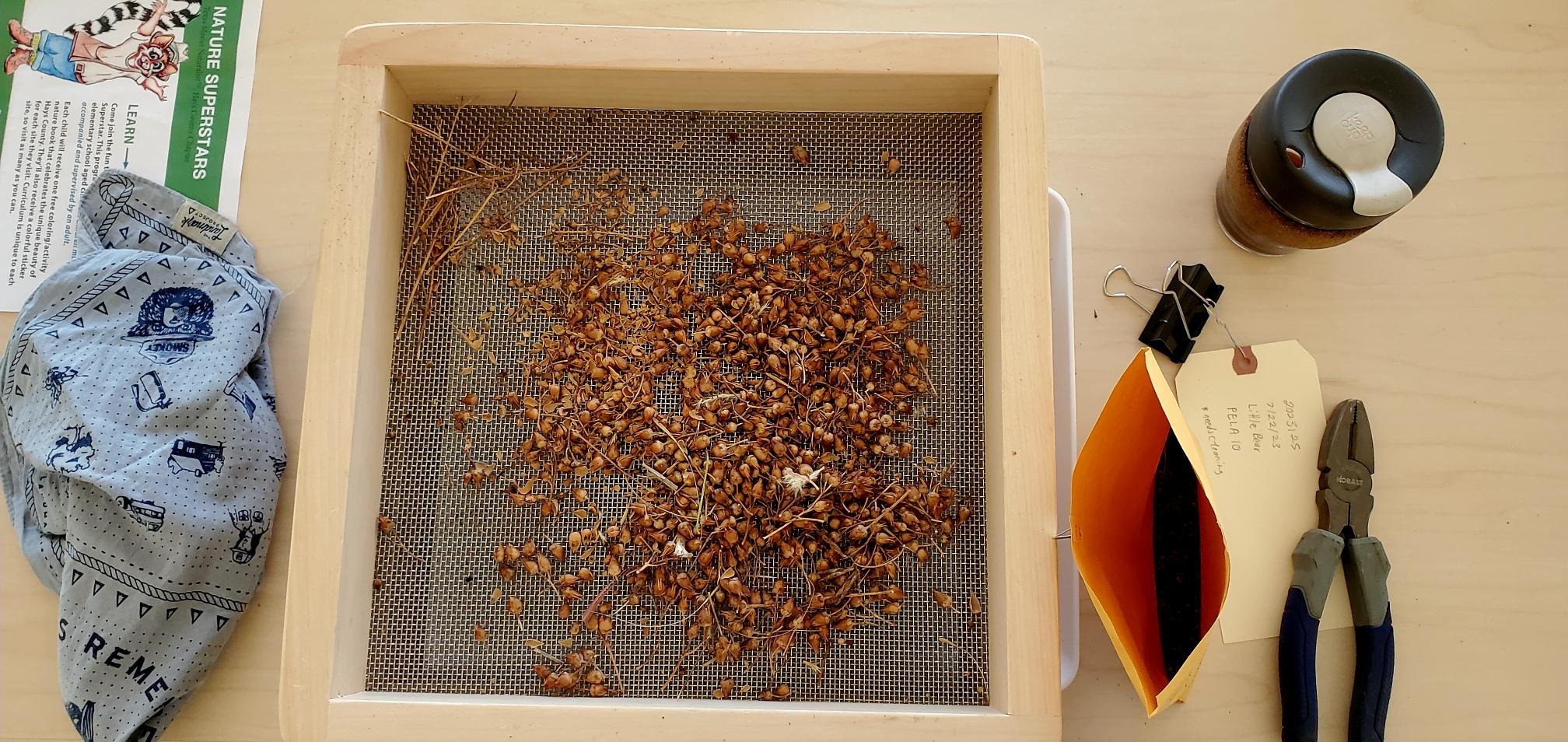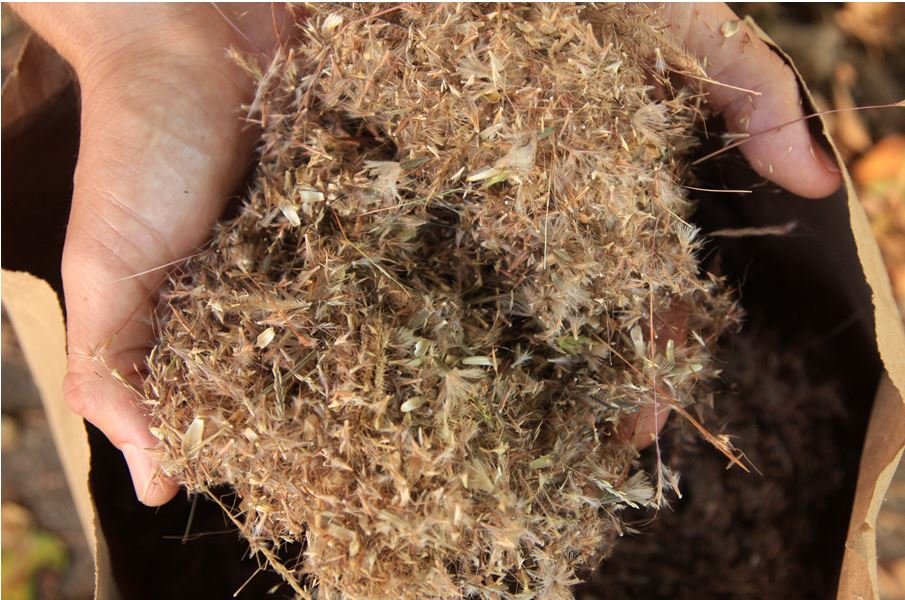Water Quality Protection Lands
How and Why They are Managed
Austin Water Wildland Conservation Division Staff
Austin Water’s Water Quality Protection Lands (WQPL) safeguard groundwater in the Barton Springs segment of the Edwards Aquifer through the conservation of over 34,000 acres in Hays and Travis counties. Over 22,000 acres are protected through conservation easements, where lands are still privately owned and managed. Landowners are compensated for the development rights, and the available impervious cover on the land is reduced to about 1%.
The City of Austin owns and actively manages over 12,000 acres according to a Land Management Plan updated every 10 years. A major goal for these lands is to restore grassland savanna ecosystems. Grassland savannas are plant communities co-dominated by native perennial grasses and forbs, and some woody plants. Characterized by continuous grass cover with some woody plants occurring, even in upland areas, grassland savannas have less continuous woody plant (or tree) cover than a woodland, supporting herbaceous plant communities that require relatively high levels of sunlight. Savanna restoration is not only good for conserving the historical biodiversity of central Texas, but also the best management technique for the optimization of water quality and quantity of recharge back into the aquifer. See Appreciating Native Grasslands - Part 1 Getting to Know Them by Christine Middleton.
While the primary mission of the Water Quality Protection Lands (WQPL) is to optimize clean groundwater recharge to the Barton Springs segment of the Edwards Aquifer, these lands provide many additional benefits to the community and environment, including protection of biodiversity, protection of cultural resources, long-term in-situ research, endangered species habitat, dark skies, open space, environmental education, and some opportunities for guided hikes and volunteer workdays.
When ecological restoration of the Onion Creek tract first began, it was as overgrazed as any other property (maybe worse!), but restoration efforts revealed incredible biodiversity, quietly waiting to return and have its day back in the sun. Volunteer botanist and Hays County Master Naturalist Tom Watson has identified more than 450 species of plants on Onion Creek tract, accounting for about half the total plant biodiversity known in all of Hays County!
Restoring Native Grassland Savanna
Bringing back fire WQPL staff use prescribed burns to mimic the natural fires that once shaped Central Texas ecosystems. Prescribed fire is an important tool to reduce brush and invigorate native grasslands. Fire also prepares sites for the planting of grass and wildflower seeds and can reduce the abundance of some introduced invasive plants.
Brush removal WQPL staff, contractors, and volunteers remove some of the woody species from these grassy biomes that require relatively high levels of sunlight; too much shade can lead to the further loss of this endangered ecosystem. We do not remove woody species in relation to wooded riparian areas, steep areas with erodible soils, and endangered species habitat, such as mature juniper-oak woodlands with Golden-cheeked Warbler habitat.
Cave and karst restoration To ensure that karst features can do the job of moving surface water into the aquifer, features such as swallets (caves and openings located in creek beds) are managed and restored to proper functioning condition and protected from sedimentation that could impede or obstruct recharge. When karst features are in creek beds, metal grates are designed and installed to let water in and keep debris out.
Restoring with seed Staff and volunteers collect, process, and sow native grass and wildflower seed to increase diversity and ecosystem resilience across the WQPL. In 2021, WQPL staff started to increase capacity to produce our own plants and seed for restoration projects by creating a nursery and seed production plot. In our seed production plot, WQPL staff and volunteers grow plants that have high conservation value, including species that have disappeared from the WQPL lands after a century of overgrazing and brush encroachment. Seed from these plants are used to bring back these lost species to the land.
There are also volunteer opportunities to work in a plant nursery setting. While plant nursery work has been done in the past on a couple of WPQL properties, a more permanent plant nursery area was installed this spring on the Onion Creek tract near the “seed haus.” The nursery area includes shaded planting benches, shaded and fenced nursery plots, and a water source. The nursery was established to learn more about the process of germination and propagation of seed collected on WQPL, to learn more about the efficacy of seed mixes, and to create a protected seed production plot maintained through supplemental watering as a local seed source. Since the seeds and plants grown in the nursery are from seed collected on the WQPL, they are already adapted to our local soil and environmental conditions.
Volunteer Workdays and Guided Hikes
The community plays a vital role in restoration efforts on the WQPL. Volunteer activities include collecting and spreading native grass and wildflower seeds, removing invasive species, removing debris from caves, and more. See these lands for yourself as a volunteer!
On a volunteer-led guided hike, you can also explore the WQPL and learn about the land, water, and many plants and animals to which the WQPL is home.
Register for upcoming hikes or sign up to volunteer at www.austintexas.gov/wildlandevents.
Learn more about the WQPL here.

